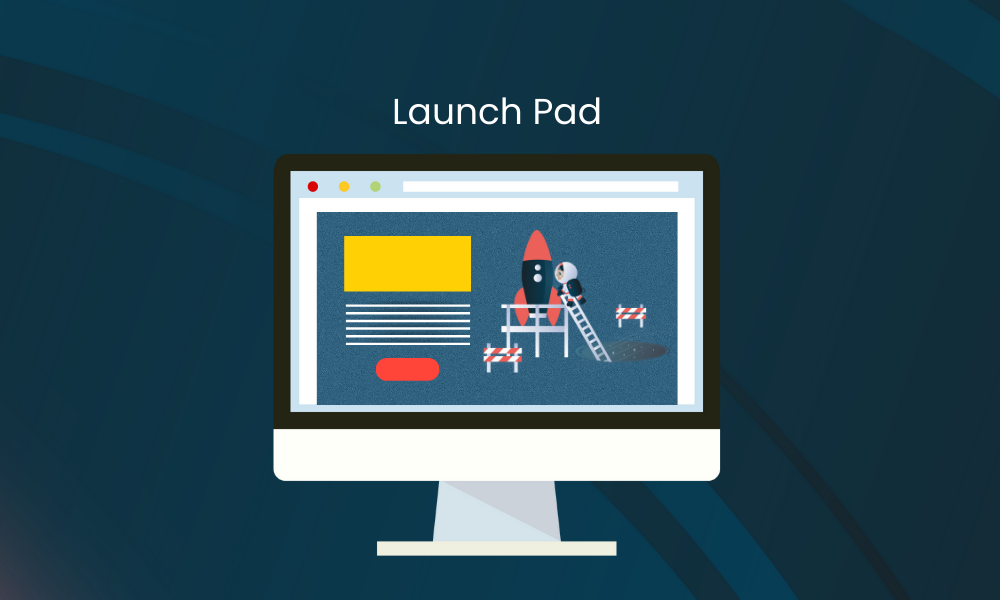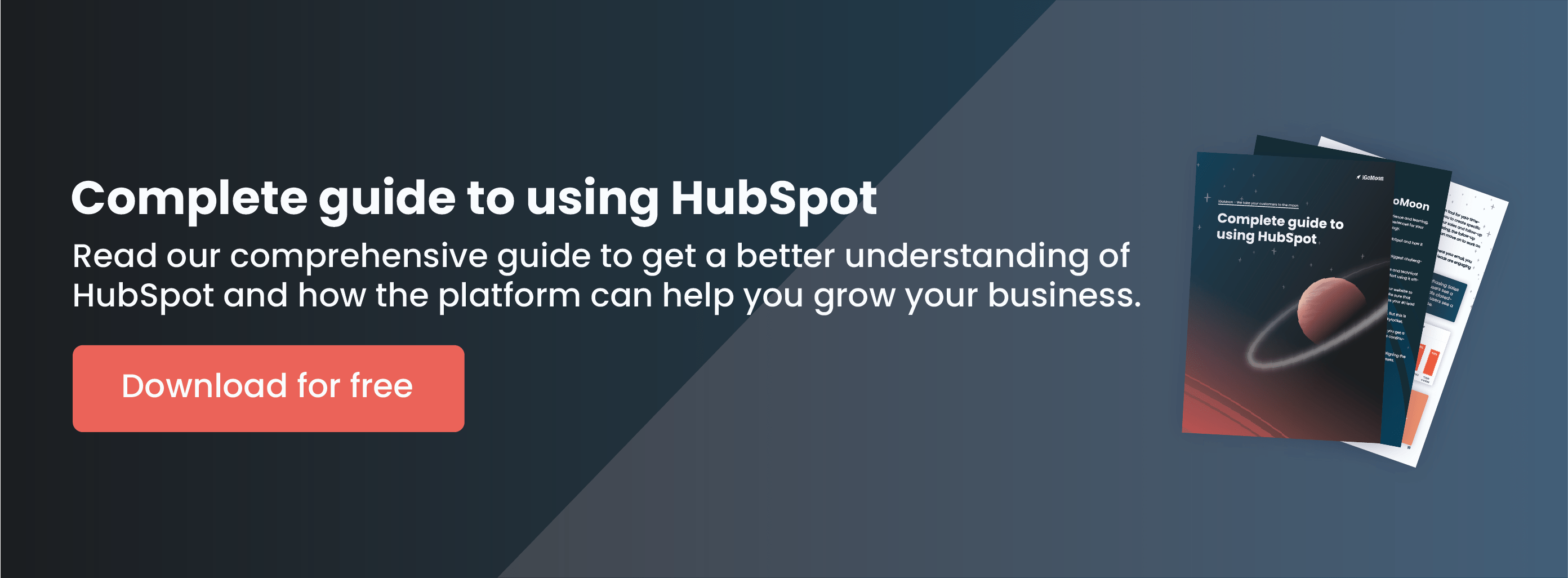In traditional web design, launching a website is the final stage of the development process. But in the Growth-Driven Design approach, everything is completely different: the launch of the website is the very beginning. Follow us to learn how to launch a website of any complexity fast and frictionless as well as make it bring immediate results.

This article was originally written by Marina Karlsson and published on 29 April 2022.
Growth-Driven Design methodology (GDD) in redesigning websites involves three important stages: website strategy, launch pad, and continuous improvement. We've previously covered how to develop a successful website strategy. After completing this phase, you gain a detailed understanding of your users and you're ready to create a solution for them. Now it's time for the second phase – the launch pad.
The dilemma with traditional web design is that experts appear to conceive of launching a website as sending a ship out on an open sea - they attempt to develop the final version as soon as possible, however, this approach risks losing sight of many details.
How can the launch pad help you? The goal of the launch pad is to quickly build and run a website that is better appearing and functioning than the one you currently have, but at the same time, it’s still not a completed product. Your launch pad website will serve as the basis upon which you will create and optimize your website, in other words, continue constantly to improve while already getting results.
Creating a launch pad website has several following benefits:
- It significantly decreases the launch expenses and reduces the risk to the company. You'll be able to launch your website in roughly half the time and at a lower cost if you start with a launch pad.
- It will assist you in achieving a faster time-to-value and a higher return on investment. The launch pad stage normally takes 60-90 days to complete. Therefore, you'll notice the results much sooner.
- It allows you to collect true user data and make decisions based on data rather than guesses.
- It would be easy for your team to work on the website if the process is well-structured and produces tangible outcomes.
Well, let’s dive in.
How to work on the launch pad: 5 methods to boost your efficiency
The launch pad website looks exactly like any other website, the only difference is what’s happening behind the scenes. However, because each website is different, there is no one-size-fits-all approach for developing a launch pad website. Instead, you may experiment with different approaches to see what works best for you. Depending on the size and complexity of your site, you just need to choose a method intelligently or even combine them. So, here are the five options for you to consider:
- Refresh
- Kick-start
- 80/20
- Launch and expand
- Wise investor
Now let's understand what each of them means.
The Refresh method is suitable for you if you’re going to redesign a site that’s been running for less than 6 months or if you’re sure of its good performance. This method implies that you'll update your existing website by turning it into a launch pad and applying all actions from the strategy stage. And only after this start working on continuous improvements.
Related article: How to develop a winning website strategy: 7 steps to success
In the kick-start method, you'll create a brand-new website by employing pre-built assets. Using pre-built assets might reduce the wastage of time. Instead of starting from scratch on each page or module, you may jumpstart your efforts and speed up the process by using different pre-built components.
The 80/20 method means that you perform the analysis of the initial wishlist with an 80/20 approach. So, you start with the 20% of items that will have 80% of the impact on the user’s challenges and the company’s goals. Then share them into must-have and nice-to-have. Start with the first part and make them the core of your new launch pad website. The rest you can implement in the first couple of months.
.jpg?width=1000&name=pexels-christina-morillo-1181345%20(1).jpg)
(Image: Pexels)
The launch and expand method suppose the deconstruction of the launch pad into various phases that can be executed over time. For example, you can start with architecture and basic design, in the next phase only work on pages, and so on, concentrating on something essential one at a time.
The wise investor method assumes that the team is concentrating on priority tasks and investing time in activities with the highest impact. Actually, you should always use it.
Pro tip: Before choosing any method, do a detailed audit of the existing website to discover where there are misalignments or gaps between your strategy and the site. Pay close attention to the architecture, design, pages, content, and functionality.
So, while selecting methods, strive to combine the greatest features of each to develop a distinct strategy for your launch pad website. Working with an experienced agency can assist you in expediting the launch and advising your team with the best approach.
How to organize the teamwork
The best way to work on the launch pad is with strategy workshops. They are periodic meetings when the team collaborates and generates a set of deliverables that will be tested on website users.
The whole team, stakeholders, heads of related departments, and senior management should attend the workshop.
These workshops might last from several hours to a day, but the result will be worth it. First, you'll gain insight and inspiration from people with various experiences and talents, which can help you better your approach and ideas. Second, because of management presence, you'll be able to approve decisions quickly. Third, it will improve collaboration and understanding among the many participants in the process.
Discover your company’s untapped potential at our workshop. Contact us
Strategy workshops are an essential aspect of the launch pad website development process. They'll help your team stay focused on the bigger picture, come up with better ideas, and move much faster.

(Image: Pexels)
To further improve processes, you need to adopt agile project management and invest in operational software or infrastructure that makes life easier for your team.
From a technical standpoint, you may create libraries of reusable web elements such as templates, modules, images, and videos, which will provide you with useful assets for kicking off any new web projects in the future. We also advise that you devote effort to creating marketer-friendly website elements. Or you can consider a CMS suitable for non-technical folks, like HubSpot CMS. The problem is that many CMSs are designed with developers in mind and are tricky to administer. Solving this issue will unlock your team’s efficiencies.
All the above will cause fewer communication slowdowns and accelerate the production of your launch pad website.
How to develop a high-quality content
The most difficult and frustrating phase of the process is usually content development. The purpose of the launch pad stage is to quickly create captivating content that engages your audience and motivates them to do particular actions.
Here are a few recommendations to help you improve your content generation efforts:
- Get started on the content as soon as possible.
- Make use of the papers created by your whole team during the website strategy stage.
- Simplify the content generation process by eliminating duplicate procedures, automating processes, and eliminating back-and-forth communication delays.
- If your employees aren't excellent writers, don't ask them to produce content for you.
- Hire a copywriter that is an expert in your field.
- Conduct regular check-ins with content producers to verify they're on track.

(Image: Pexels)
Like this, you will make the process easier for everyone and create solid and engaging content that will be interesting for your users and friendly to SEO.
Related article: How to choose the perfect categories for your blog
What to check before the launch
Before you make the site live, don’t forget to go through our checklist. We've collected for you the main points that you need to pay attention to before your site becomes available to visitors:
- Check the functionality: web forms, internal and external links, loading time optimization, server response after redirect, and all your integrations.
- Look at the design and layout one more time. Is your website adopted to all devices and working in all popular browsers? Check web accessibility (WCAG), make CSS/HTML validation checks, and optimize graphics and scripts. Make sure your images’ size and weight are correct, they fit into the texts and have prescribed attributes. Don’t forget about small details like favicons.
- What about website security? Before launching it directly, take care of protection and possible data loss. Make a mandatory backup of the latest version, which will be the starting point.
- Let's get back to the content, after all, it must be of the highest quality. Check spelling, punctuation, or other errors, and double-check your contact information. Format content correctly, paragraphs, headings and don't use content stubs. Don't publish the text on unfinished pages. Monitor the quality of graphics and whether it displays correctly on any device.
- Go through your SEO (titles, meta-description uniqueness, length, grammatical and spelling errors there, alt attributes for all images). Make sure an XML sitemap is there, you use HTML markup elements properly and URLs are written in a human-understandable way.
- Do you know exactly what you will analyze on the site? Analytics is one of the most important things when launching a website. Make sure it is configured correctly and will collect web data in a proper way. Connect services, set up sales funnels, choose the right metrics, and sync your analytics accounts to get complete information.
- A critical matter is GDPR compliance and copyrights. Provide strict compliance with the requirements for the processing of personal data and cookies use. Check the compliance with copyrights on any third-party content and describe the site's privacy policy for all visitors in an accessible way.
Related article: What you need to know about GDPR and how to implement it
Launch pad and all the above steps are suitable for a wide range of websites regardless of their type or size. You may still create a launch pad if you have a large or multi-national website. It just can take a bit longer, and your approach must be smarter. However, using the launch pad principles will still vastly increase the project speed and quality when compared to traditional web design.
Learn more about what you can do with the HubSpot CMS and how you can grow your business with HubSpot by downloading our free guide.
